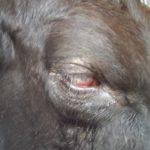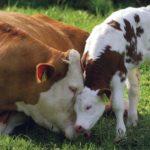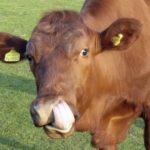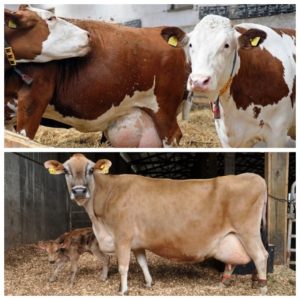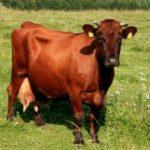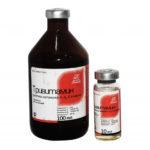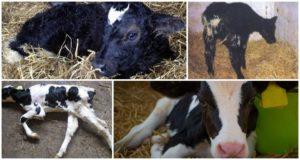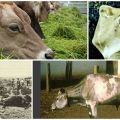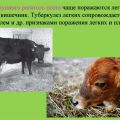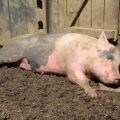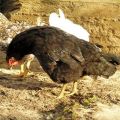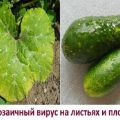Symptoms of parainfluenza-3, treatment and prevention of cattle
When transporting cattle, buying calves or moving them to other farms, a very contagious disease may occur - parainfluenza-3 of calves and cattle (Paragrippus bovum). This disease is also called "transport fever", in English - parainfluenza-3. The disease is manifested by high fever, catarrhal symptoms of the nose and throat, lesions of the bronchi and lungs. With a hyperacute course, a lethal outcome is possible.
Historical reference
Symptoms of the disease in cattle were first reported and described in the United States by Scott and Farley (1932). Initially, there was a misconception about the causative agent of the disease - bacteria of the Pasteurell genus. In 1959, it was found that the causative agent is a virus characterized by an antigenic structure similar to the human parainfluenza virus-3 (PG-3). In the USSR, the disease was first registered in 1969.
At present, the disease has not been overcome in the world industrial animal husbandry; all countries have developed a set of quarantine measures and compulsory vaccination of animals against PG-3 cattle.
Causes of pathology
The etiology of the disease is associated with the introduction of a virus belonging to the family of paramyxoviruses into the epithelium of the respiratory tract of cattle, especially calves. Its size is 150-250 nanometers, RNA is present in the structure. The danger of injury lies in the fact that the virus has the properties of adhesion, decomposition and deposition of red blood cells (hemagglutination, hemolysis and hemadsorption). As a result of the penetration of the virus into the body, two types of antigens appear in the blood of animals: S and V.
The virus spreads through air currents during animal breathing, nasal fluids and outflows from the reproductive organs of cows.
During crowded transportation of livestock or kept in rooms with high air humidity from the carrier, the virus enters the respiratory epithelium of healthy animals and begins to actively multiply, causing symptoms of the disease.
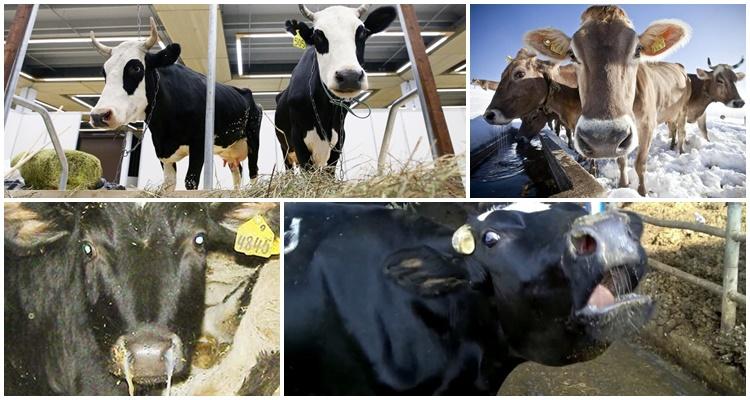
Parainfluenza-3 symptoms
In adult animals, the disease is mild. In calves, variants of the course of the disease are possible:
- sharp (including hyperacute);
- subacute;
- chronic.
Depending on the variant and severity of the course, parainfluenza-3 can occur in the form of rhinitis, bronchitis, bronchopneumonia. Each type of disease course is characterized by a set of features.
Spicy
This type is divided into two stages - hyperacute and acute. In the first variant of the course, if the calves fall ill before 6 months, then a coma and death are possible within the first 24 hours from the onset of the disease.In the acute course, in the first 2-3 days, there is an increase in body temperature up to 41-42 degrees, dry cough, nasal and ocular outflows increase. The animal refuses to eat, breathing becomes rapid and shallow (up to 84 respiratory movements per minute), the heart rate increases to 120 beats per minute. Salivation and diarrhea later join. The animal quickly loses weight, possibly depression of nervous and cardiac activity. The coat looks dull, disheveled.
Subacute
The subacute course of the disease PG-3 in cattle is characterized by the same symptoms as the acute one, but the body temperature does not rise to such high values, and the condition of the animal is not very depressed. Full recovery occurs within 7-10 days.
Chronic
This variant of the course of the disease develops as an unfavorable complication and is expressed in the form of chronic bronchopneumonia. Animals are significantly emaciated, coughs and rhinitis become lingering, difficult to treat. In the lungs of animals, wheezing and crepitus can be heard. Cattle with this stage of the disease usually have to be slaughtered because the animals are very weak and sick pregnant cows infect the calves in utero. The question of the suitability of carcasses for sale is decided when analyzing for pathological changes.
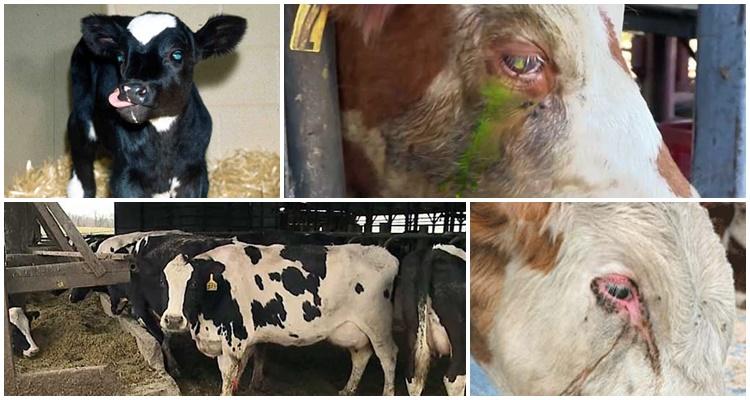
Treatment methods
Treatment is effective in a complex of measures carried out in the acute and subacute stages. It includes general measures, administration of hyperimmune serum, and antibiotic therapy.
Common fight meta
Of great importance in the recovery of animals is the organization of normal conditions and maintenance regime - complete feed, frequent ventilation and disinfection of premises, replacement of bedding, stay of cows and calves in the open air, compliance with spatial requirements for keeping young cattle. When examining an animal, a veterinarian may prescribe restorative and symptomatic therapy, which includes:
- antiviral drug "Mixoferon";
- "Trivitamin" - to activate metabolic processes - intramuscularly, 5 ml of the drug per day;
- bronchodilators and expectorants - "Theobromine", "Theophylline", ammonium chloride, potassium iodide;
- in case of depression of nervous and cardiac activity in cattle - solutions of caffeine, camphor, glucose;
- diuretic drugs.
Sick animals are isolated in separate sections or boxes, after which the premises are completely disinfected, and contact animals are vaccinated. Farm quarantine is imposed for 14 days from the date of detection of the last case of the disease.
Hyperimmune serum
It is prescribed as early as possible when a disease is detected. The serum contains antibodies to the PG-3 virus, while they have not yet been developed in the body of diseased calves
Antibiotics
To prevent the addition of a bacterial infection and the development of pneumonia in animals, antibiotics are prescribed. Modern antibacterial drugs belong to the groups of cephalosporins, macrolides. Carrying out a sensitivity analysis of microflora can also show the effectiveness of sulfa drugs. With a more severe course of the disease, combined antibiotics are prescribed - "Oleandovetin", "Tetraolean".

Immunity
After birth up to 2-4 months, calves can retain the immunity obtained with cow's milk. However, it does not guarantee protection against disease of animals during transportation or temporary crowded keeping.
For reliable protection of young cattle from PG-3, a dry cultural vaccine "Paravak" has been developed. In dysfunctional farms, it is more effective to use a complex vaccine against parainfluenza-3 and infectious bovine rhinotracheitis - "Bivac". Calves from 20 days of age should be immunized. Vaccines are administered in two doses: the first time - in the nasal passages, the second, after 2 weeks - subcutaneously. Immunity is formed 2 weeks after the second injection and lasts 6 months.
Preventive actions
Prevention of parainfluenza-3 dictates to farms a special regime for keeping and receiving animals:
- if livestock is purchased abroad, it is kept in quarantine for at least 30 days;
- young animals are purchased only from reliable suppliers;
- livestock maintenance is carried out according to the flow scheme - the entire barn is filled, then emptied at once, followed by complete disinfection of the premises;
- strict adherence to cleaning and ventilation of premises with animals;
- the veterinary control service must inspect animals several times a day.
Responsibility for the spread of the disease lies with the managers of livestock enterprises. This must be remembered by every leader, only under their strict control and with immediate action is it possible to achieve a healthy livestock.
